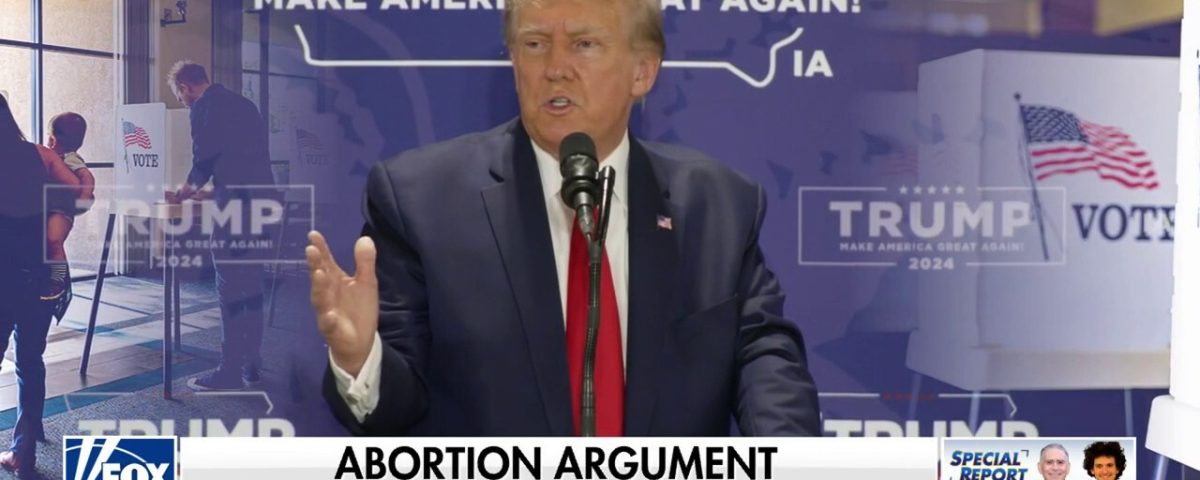
Can You Choose Your Baby’s Gender with IVF?
April 13, 2025
What Is IUI vs. IVF: Your Guide to Fertility Treatments
April 13, 2025Does Trump Support IVF? A Deep Dive into His Stance, Policies, and What It Means for You
In vitro fertilization (IVF) has become a hot topic in recent years, especially as families across the U.S. face growing challenges with infertility. With one in seven couples struggling to conceive, IVF offers hope—but it’s expensive, often costing between $12,000 and $25,000 per cycle. That’s why many Americans are curious about where political leaders stand on this issue. One name that keeps popping up: Donald Trump. Does he support IVF? What has he actually done about it? And what could his stance mean for families like yours?
Let’s dig into the facts, explore Trump’s words and actions, and uncover some angles you might not have considered yet. Whether you’re thinking about IVF yourself or just want to understand the bigger picture, this article will break it all down in a way that’s easy to follow and packed with fresh insights.
Trump’s Public Stance on IVF: What He’s Said
Donald Trump has made several public statements about IVF, especially during his 2024 presidential campaign and into his second term, which began in 2025. His comments have sparked both excitement and skepticism, so let’s look at what he’s actually said.
Back in August 2024, while campaigning in Michigan, Trump told a crowd, “Under the Trump administration, your government will pay for—or your insurance company will be mandated to pay for—all costs associated with IVF treatment. Because we want more babies, to put it nicely.” This was a bold promise, and it caught a lot of attention. He doubled down later that year, calling himself the “father of IVF” during a Fox News town hall—though he admitted he’d only recently learned what the procedure involved.
Fast forward to February 2025, after winning the election, Trump signed an executive order aimed at “expanding access to IVF” and reducing costs. The White House touted it as proof of “promises made, promises kept.” But here’s the catch: the order didn’t actually make IVF free or change any laws. Instead, it asked for a list of policy ideas to be delivered within 90 days. So, while Trump’s words sound supportive, the follow-through has left some wondering how serious he is.
What’s clear is that Trump has positioned himself as pro-IVF, especially after a controversial Alabama Supreme Court ruling in 2024 declared frozen embryos “children.” That decision threw IVF into chaos in the state, and Trump quickly spoke out, urging Alabama lawmakers to protect access. His stance seems to align with public opinion—about 6 in 10 Americans support protecting IVF, according to a 2024 AP-NORC poll. But words are one thing; actions are another. Let’s see what he’s done.
Trump’s Actions on IVF: Beyond the Headlines
To really understand Trump’s support for IVF, we need to look at his record. Here’s a breakdown of key moments and what they tell us.
The 2025 Executive Order: A Step Forward or a PR Move?
On February 18, 2025, Trump signed an executive order directing his domestic policy team to come up with ways to “protect IVF access and aggressively reduce out-of-pocket and health plan costs.” It’s a move that sounds promising—after all, who wouldn’t want cheaper IVF? But dig into the details, and it’s less concrete than it seems.
- What it does: The order sets a 90-day deadline for policy recommendations. It highlights the high cost of IVF and the need for “family formation,” a nod to Trump’s broader push for more babies.
- What it doesn’t do: It doesn’t guarantee funding, mandate insurance coverage, or change any current laws. It’s more of a starting point than a solution.
Some experts, like Barbara Collura from Resolve (a leading infertility advocacy group), see it as a “first step.” Others, like Senator Tammy Duckworth, call it “toothless” because it lacks immediate impact. So, while it’s a signal of support, it’s not the game-changer Trump promised on the campaign trail.
Campaign Promises vs. Reality
During the 2024 race, Trump floated the idea of making IVF free—either through government funding or insurance mandates. It was a big claim, especially since a single year of IVF cycles in the U.S. (about 390,000 in 2022) could cost upwards of $7.8 billion at $20,000 per cycle, per the Department of Health and Human Services. That’s a hefty price tag, and he never explained how he’d pay for it.
Since taking office in 2025, there’s been no move to introduce legislation or secure funding. Compare that to his first term, when he doubled the child tax credit and allowed penalty-free withdrawals from retirement accounts for new parents—policies that indirectly supported families but didn’t touch IVF directly. His latest order suggests he’s still interested, but the lack of specifics leaves room for doubt.
The Alabama Fallout
The 2024 Alabama ruling put Trump in a tricky spot. As the guy who appointed three Supreme Court justices who helped overturn Roe v. Wade in 2022, he’s tied to the legal shifts that made the Alabama decision possible. When clinics paused IVF over fears of lawsuits, Trump acted fast, saying, “I strongly support the availability of IVF for couples who are trying to have a precious baby.” Alabama lawmakers passed a fix within weeks, and Trump took credit for pushing them.
This moment shows he’s willing to step in when IVF’s on the line—but it also highlights a tension. Some of his conservative base, including anti-abortion groups, oppose IVF because it can involve discarding embryos. Trump’s dodged that conflict so far, but it could shape what he does next.
What’s Driving Trump’s IVF Stance?
Trump’s support for IVF isn’t just about policy—it’s political, personal, and tied to bigger trends. Here’s what’s behind it.
Political Pressure
IVF became a lightning rod after the Alabama ruling, and Trump saw the writing on the wall. With Democrats hammering reproductive rights in the 2024 election, he needed to soften his image. Posts on X from early 2025 show his supporters defending him, with one user saying, “Trump is pro-IVF and scared to go full pro-life—this is overblown.” Meanwhile, critics argue he’s just playing to the crowd. Either way, public support for IVF (60% in that AP-NORC poll) makes it a safe bet for him.
A Push for More Babies
Trump’s often talked about wanting “more babies” in America. The U.S. fertility rate hit a record low in 2023, dropping 3% from 2022, per the White House. At 1.67 births per woman in 2022 (below the 2.1 replacement rate), the country’s population could shrink without immigration. Trump’s IVF stance fits into this “pronatalist” vibe—he sees it as a way to boost families and counter that decline.
The Anti-Abortion Tightrope
Here’s where it gets messy. Some of Trump’s biggest backers—like evangelicals and groups like Live Action—hate IVF. They argue it “commodifies babies” by creating and sometimes discarding embryos. After the 2025 executive order, activist Lila Rose posted on X, “IVF is NOT pro-life.” Trump’s avoided picking a side, but if he pushes IVF too hard, he risks losing that base. It’s a balancing act he hasn’t fully figured out.
How Does Trump’s Stance Compare?
To get the full picture, let’s stack Trump’s approach against others.
Democrats’ Playbook
Democrats, like Senator Tammy Duckworth, have pushed the Right to IVF Act, which would:
- Guarantee nationwide access to IVF.
- Require insurance (including Medicaid and military plans) to cover it.
- Protect access for single women and LGBTQ+ couples.
Republicans blocked it twice in 2024, calling it too broad. Trump hasn’t endorsed it, and his party’s resistance suggests he’s not ready to go that far.
State-Level Action
Some states have stepped up:
- New York: Mandates insurance coverage for IVF since 2020.
- Alabama: Passed a quick fix in 2024 to shield clinics from lawsuits.
Trump’s order doesn’t match these concrete steps. It’s more of a “let’s study it” approach than a “let’s do it” one.
Global Perspective
Countries like the UK and Australia subsidize IVF through public health systems, covering multiple cycles for eligible couples. Trump’s floated similar ideas, but the U.S. lags behind—no federal program exists, and only 20% of large employers offer IVF benefits, per a 2023 Mercer survey.

3 Fresh Angles You Haven’t Heard About
Most articles stop at Trump’s statements and the executive order. But there’s more to this story. Here are three points that dig deeper and add value.
1. The Military IVF Gap
Did you know U.S. military families often get the short end of the stick on IVF? Tricare, the military’s health plan, doesn’t cover it unless infertility stems from a service-related injury. That leaves thousands of veterans and active-duty members—people Trump often praises—scrambling to pay out of pocket. His 2025 order could push for change here, but he hasn’t mentioned it yet. Imagine the impact if he did: a concrete win for a loyal base.
2. The Cost-Benefit Math
Let’s crunch some numbers. If Trump made IVF free for the 390,000 cycles done in 2022, that’s $7.8 billion a year. Sound crazy? Not when you compare it to the $1.7 trillion spent on Medicare in 2023. IVF’s a drop in the bucket—and it could pay off. A 2021 study in Fertility and Sterility found that every dollar spent on IVF saves $7 in long-term healthcare costs (think fewer premature births). Trump loves a good deal—why not frame IVF as one?
3. The Embryo Debate’s Hidden Twist
Everyone talks about anti-abortion groups hating IVF over discarded embryos. But here’s a twist: some IVF patients freeze embryos for years, even decades. A 2024 Johns Hopkins report says frozen embryos can stay viable for over 10 years, with 90% surviving thawing. What if Trump pushed a policy to encourage donation instead of destruction? It could bridge the gap with his base while keeping IVF alive. No one’s talking about this middle ground—yet.
What Could Trump’s Support Mean for You?
If you’re considering IVF or just curious, Trump’s stance could shape your future. Here’s how.
If He Follows Through
- Lower Costs: Insurance mandates or subsidies could slash that $12,000-$25,000 price tag.
- More Access: Federal employees, military families, and everyday folks might get coverage.
- Cultural Shift: Trump’s backing could normalize IVF, reducing stigma.
If He Doesn’t
- Status Quo: You’re still stuck with patchy insurance and high costs.
- Legal Risks: More states could follow Alabama’s lead, threatening access if embryo laws tighten.
- Political Football: IVF stays a debate topic, not a solved problem.
Interactive Quiz: Where Do You Stand on IVF?
Take a quick break and see how your views line up. Answer these questions (jot them down or just think about it):
- Should the government pay for IVF, or is it a personal expense?
- A) Yes, it’s a public health issue.
- B) No, it’s up to individuals.
- Do you think embryos should have legal rights?
- A) Yes, life starts at conception.
- B) No, that limits IVF too much.
- Would cheaper IVF change your family plans?
- A) Definitely—I’d consider it.
- B) Not really—it’s not for me.
No right or wrong answers—just a chance to reflect. Share your thoughts with a friend or keep them to yourself!
Practical Tips: Navigating IVF Under Trump’s Watch
Whether Trump delivers or not, you can take steps now. Here’s a guide to make IVF work for you.
Step 1: Check Your Coverage
- ✔️ Call your insurance provider and ask about fertility benefits.
- ❌ Don’t assume it’s covered—only 1 in 5 plans include IVF, per Mercer.
Step 2: Explore Funding Options
- ✔️ Look into grants from groups like Baby Quest or CNY Fertility.
- ❌ Avoid high-interest loans if you can—IVF debt can pile up fast.
Step 3: Stay Informed
- ✔️ Follow news on Trump’s 90-day policy review (due May 2025).
- ❌ Don’t panic over headlines—laws change slowly.
Bonus Tip: Talk to Others
Join online forums or local support groups. Real stories from IVF parents can guide you better than any policy promise.
The Bigger Picture: IVF in 2025 and Beyond
Trump’s stance is just one piece of the puzzle. Here’s what else is shaping IVF today.
Tech Advances
A 2024 study in Nature Medicine showed AI can boost IVF success rates by 15%, picking the best embryos faster. If costs drop, this could pair with Trump’s plans to make IVF more doable.
Social Trends
X posts in early 2025 show growing chatter about IVF access for single women and LGBTQ+ couples—groups often left out of coverage debates. Trump’s order doesn’t address this, but it’s a gap worth watching.
Economic Stakes
Infertility affects 1 in 8 women, per the CDC, and demand for IVF doubled from 2012 to 2021. It’s not just personal—it’s a $20 billion industry. Trump’s moves could ripple through healthcare and beyond.

Poll: What Matters Most to You?
Weigh in on this quick poll to keep the convo going:
- What’s your top IVF priority?
- A) Lower costs
- B) Legal protection
- C) Wider access (e.g., for military or LGBTQ+ families)
Drop your pick in your head or chat about it with someone—it’s your call!
Trump and IVF: A Mixed Bag with Potential
So, does Trump support IVF? Yes, on paper and in speeches. He’s said the right things, signed an order, and reacted when access was at risk. But the jury’s still out on results. His 2025 executive order is a start, not a finish line, and his promises of free IVF haven’t materialized yet. For families hoping for help, it’s a waiting game—90 days from February 2025 puts us in May, so mark your calendar.
What sets this apart from the noise is the deeper look: the military gap, the cost-benefit angle, and the embryo donation idea. These aren’t just talking points—they’re real issues that could shift the IVF landscape, whether Trump acts or not.
For now, his support feels like a half-built bridge. It’s there, but you can’t cross it yet. If you’re rooting for IVF, keep an eye on what he does next—and take charge where you can. Your family’s story doesn’t have to wait for Washington.
Final Thoughts: Your Voice Counts
Trump’s IVF stance matters, but so does yours. Whether you’re a hopeful parent, a policy nerd, or just someone who cares, this issue touches real lives. Share this with someone who needs it, or dig into the links below for more. The more we talk about it, the closer we get to answers.
- Want more data? Check the CDC’s latest IVF stats.
- Curious about costs? Resolve.org has a breakdown.
- Got a story? Think about how IVF fits into your world.
Here’s to clarity, hope, and maybe a few more babies down the road.



